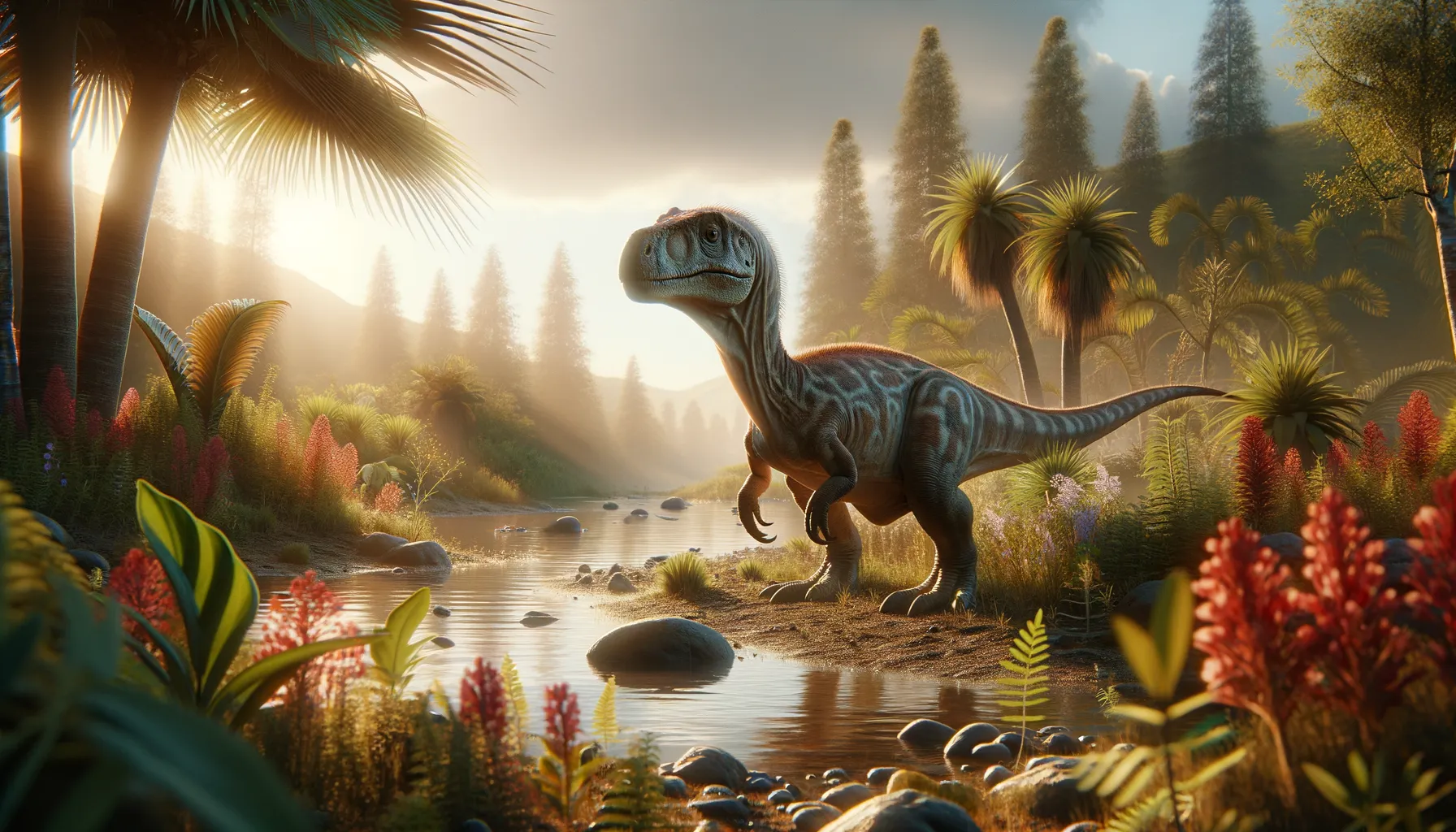
Panphagia
Early dinosaurl evolution's humble pioneer.
Period
Triassic
Length
Measured approximately 3 meters in length.
Height
Stood about 1 meter tall.
Weight
Weighed roughly 40 kilograms.
Panphagia was a small, early dinosaur from the Triassic period, known for its primitive characteristics that hint at the evolution of later, more derived sauropods. Its fossil, found in Argentina, showcases its modest size and omnivorous diet, suggesting it occupied a generalized niche in its ecosystem. This dinosaur provides valuable insights into the morphologic transitions in early dinosaur evolution and offers clues about the diverse species of its time.
Diet
Panphagia had an omnivorous diet, consuming both plants and small animals. Its teeth were adapted for a mixed diet, allowing it to exploit various food sources available in its environment.
Hunting
Being an omnivore, Panphagia likely foraged for fruits and small animals. It did not rely on speed or strength to catch prey but rather on its ability to consume a wide range of food.
Environmental challenges
Panphagia lived during a time of significant geological change, with shifting landscapes and climate fluctuations. This required it to be adaptable in its feeding habits. Predation by larger reptiles also presented a challenge, necessitating potential strategies for evasion and survival.
Speed
Panphagia was not particularly fast, moving at a modest pace.
Lifespan
Averaged around 15 to 20 years in the wild.
First discovery
Discovered in northwestern Argentina in 2009.
Fun Facts
- Panphagia is one of the earliest known dinosaurs, living about 231 million years ago during the Triassic period.
- The name 'Panphagia' means 'eats everything,' suggesting it might have been an omnivore.
- Panphagia was discovered in Argentina, in a famous fossil site called the Ischigualasto Formation.
- It was a small dinosaur, estimated to be around 4 feet in length, roughly the size of a large dog.
- Panphagia's place in the dinosaur family tree is important, as it helps scientists understand the evolution of later, bigger sauropod dinosaurs.
- Its fossils were first uncovered in 2006, providing valuable insights into early dinosaur diets and habitats.
- Panphagia had a mixture of primitive and advanced features, highlighting its transitional role in dinosaur evolution.
Growth and Development
Panphagia likely underwent rapid growth during its juvenile stages to reach a size where it could better avoid predators. The development of traits such as mixed dentition might have also evolved to match its changing dietary needs. This adaptability might have played a role in its evolutionary success.
Habitat
Panphagia inhabited Triassic floodplains, where rivers and lush vegetation were abundant. These environments provided a diverse array of food sources. The coexistence with other herbivorous and carnivorous species would have influenced its lifestyle and interactions.
Interaction with other species
Panphagia shared its habitat with other early dinosaurs and reptiles, leading to competition for food and resources. Its omnivorous diet potentially reduced direct competition with strict herbivores or carnivores. It might have also engaged in symbiotic relationships, exploiting plants that thrived due to the activities of other animals.
Natural lifespan
Panphagia lived naturally for about 15 to 20 years.
Reproduction
Like many early dinosaurs, Panphagia likely reproduced by laying eggs in secluded nests. The young were possibly cared for in the early stages of life, although evidence on parental care is scant. Seasonal breeding might have coincided with abundant resources.
Social behaviour
Panphagia might have lived in small groups for increased protection against predators. Its social structure is not well-documented, but group living could have facilitated learning and resource acquisition strategies.
Fossil locations
Panphagia fossils have been found predominantly in the Ischigualasto Formation in Argentina. This formation is known for preserving a variety of Triassic period fossils. Its fossils help highlight the early diversification of dinosaurs in South America.
